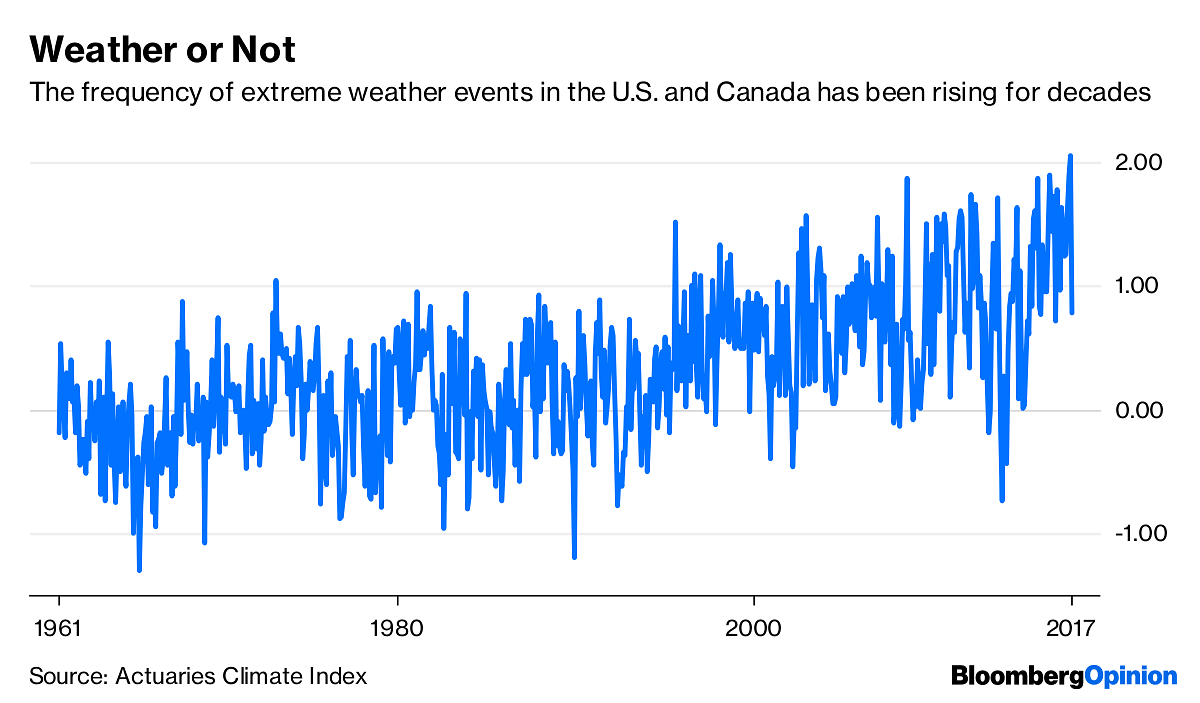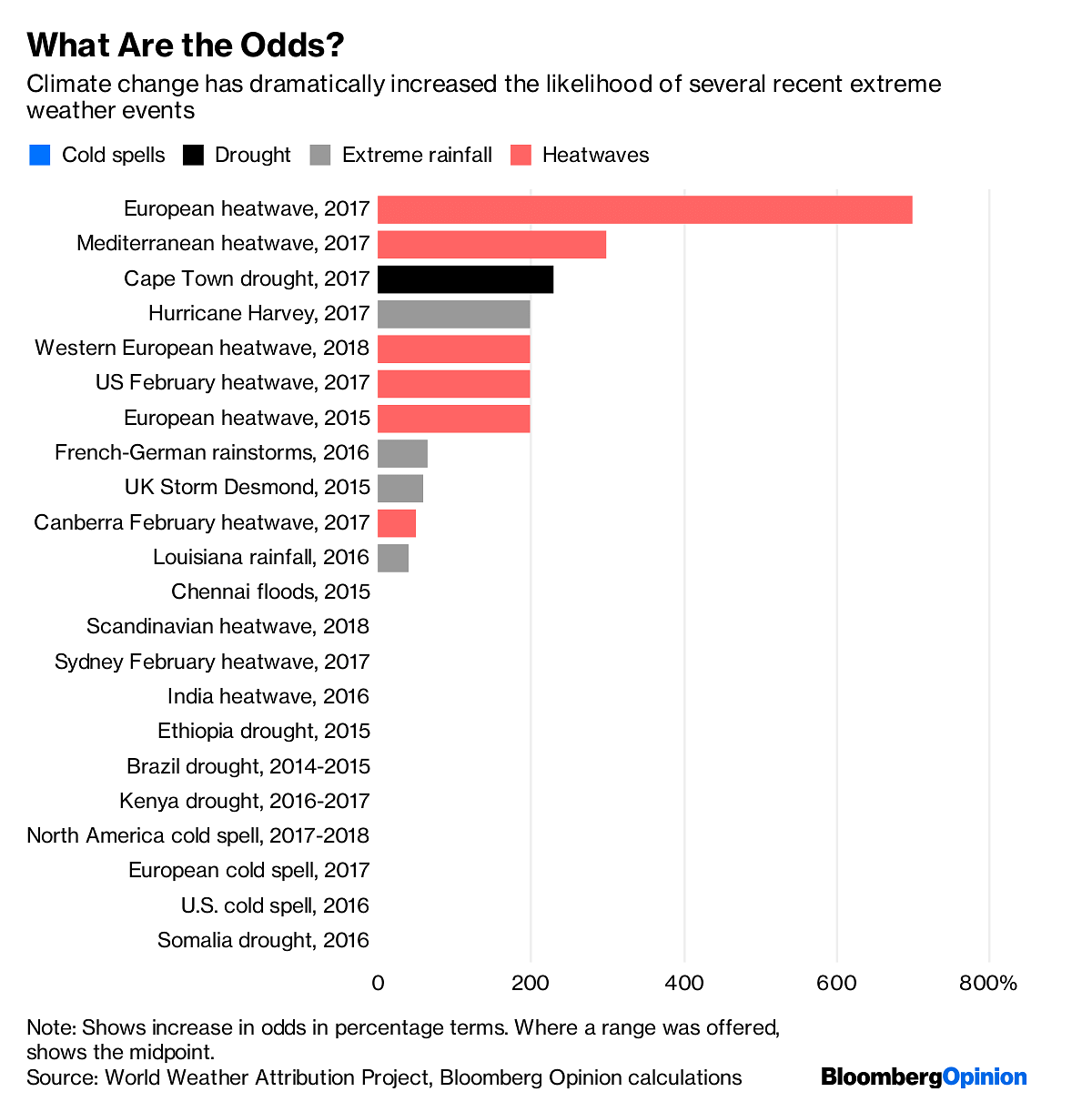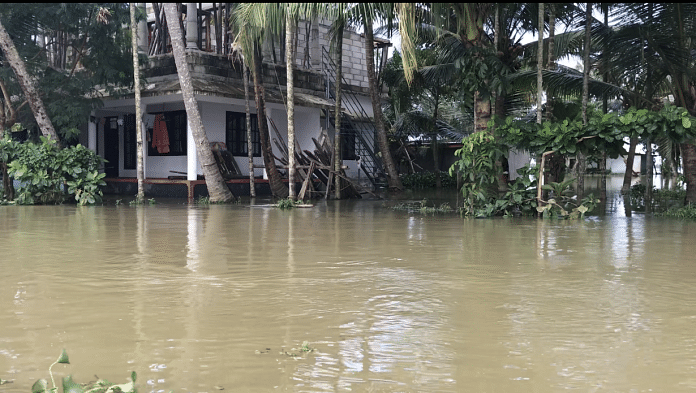We should drop belief that origins of weather disasters are mysterious. Scientists are growing increasingly sure of our role in causing them.
There’s a familiar refrain that goes up when extreme weather events bear down on population centers, as Hurricane Florence and Typhoon Mangkhut are now doing in the western Atlantic and Pacific Oceans: While carbon emissions from human activity may be causing a general warming, it’s impossible to draw a direct link between any one event and climate change.
That’s a comforting thought. Droughts, hurricanes, floods and heatwaves have been a feature of the global climate since long before humans walked the earth. Who’s to say whether this latest round of disasters is a result of our industrial and agricultural practices, or simply the normal weather variations of a chaotic atmosphere?
As my colleague Faye Flam wrote this week, there’s a natural tendency to assign blame in the wake of terrible events, and the answer to the question is often more complicated than a simple yes or no. At the same time, it’s no longer right to suggest that attribution is an unanswerable hypothetical, like pondering how many angels could dance on the head of a pin. We know a great deal about it — and the answers are troubling.
Studies of the European heatwaves that have become an almost annual occurrence in recent years have shown that they were several times more likely to happen as a result of climate change, for instance. The odds of the coral bleaching suffered by the Great Barrier Reef in 2016 were 175 times greater than they’d have been without human-induced emissions. And three anomalous warm spells in 2016 would have been impossible in a preindustrial climate, according to papers published this year in the Bulletin of the American Meteorological Society.

The science behind these studies is relatively new, but draws on long-established methods. “These are techniques that climate scientists stole from epidemiologists and public health researchers,” says Sophie Lewis, a research fellow at the University of New South Wales.
Researchers use computer models of the climate and run thousands of simulations to establish the odds of events happening at current and preindustrial concentrations of atmospheric carbon. The level of accuracy has risen drastically in recent years as computing power has increased, the number of people working in the field has gone up, and an expanding volume of weather data, climate modelling and extreme events has produced more information to work with.

Importantly for a scientific field, where falsifiability is essential, it’s often the case that no link can be proved. In 35 percent of the 131 peer-reviewed studies published in the American Meteorological Society’s annual reviews of extreme event attribution since 2011, no connection to climate change could be demonstrated.
Floods in Chennai in 2015 and an Indian heatwave the following year had no clear tie to climate change, according to studies published by the World Weather Attribution Project, a scientists’ group. Cold snaps in North America and Europe in 2017 were probably less likely than they’d otherwise have been thanks to human emissions — because the atmosphere is getting warmer, after all. Droughts in the horn of Africa between 2015 and 2017 also showed no clear link to climate change and may in some cases have been less likely, although the water shortage in Cape Town last year was about 3.3 times more probable.
There are still widely varying degrees of accuracy that can be achieved. Large, long-lasting events like heatwaves and cold snaps have become so well understood that researchers are increasingly not focusing their attention on them. “That’s established science now, so it would be like a public health journal publishing on the risks of smoking,” says Lewis.
More complex, short-term events like storms and high winds can be harder to analyze — though even there, the rains that inundated Houston during Hurricane Harvey in 2017 are reckoned to have been three times as likely thanks to climate change.
“For extreme short-timescale rainfall it is very easy to show a link,” said David Karoly, leader of the earth systems and climate change hub at Australia’s National Environmental Science Program. “As the temperature rises, the atmosphere holds more moisture, which is likely to lead to changes in the amount of rainfall.”
While analyses of events in the early 2000s could take more than a year, they’re increasingly now being done in real time, too. One study published last week attempted to isolate the climate-change impact of Hurricane Florence in advance, estimating that it would be stronger and drop 50 percent more rainfall than if it had hit in a preindustrial climate.
The results of this don’t just matter to scientists and climate campaigners. Insurers have a natural interest in the odds of disastrous events, and have been collecting data on extreme weather for decades. The Actuaries Climate Index, a study of anomalous weather events in the U.S. and Canada dating back to the early 1960s, has shown a marked rising trend in recent years that ought to give insurers and reinsurers pause in considering how to protect against future risks.
We’d think it bizarre to state that there’s no link between cigarette smoking and lung cancer, even though causation in individual cases is impossible to prove. In the same way, we should drop the comforting belief that the origins of individual weather disasters are mysterious and unknowable. Over the coming years, more and more extreme events will happen — and scientists will grow increasingly sure of our role in causing them. – Bloomberg



